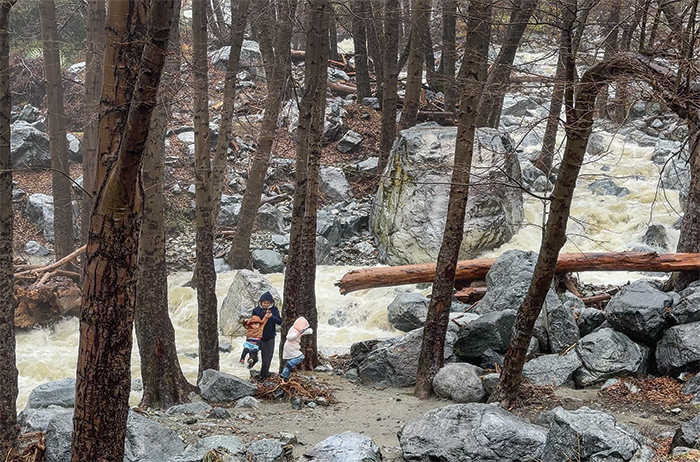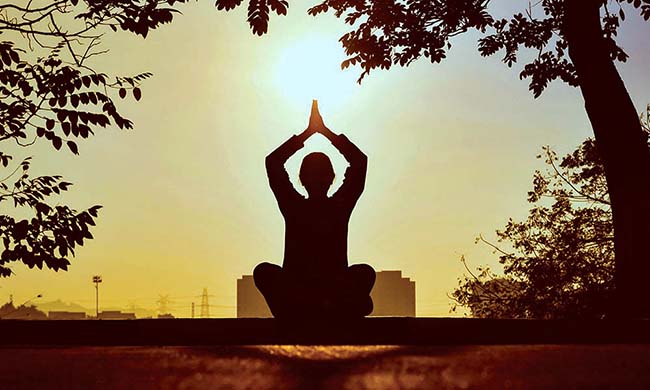Documentary ‘Earthrise’ to screen at Claremont Film Festival
This year’s Claremont Film Festival features seven movies from around the world, including Earthrise, a 30-minute documentary that tells the story of the iconic 1968 photograph of the same name taken from lunar orbit by astronaut William Anders.
The 11th annual festival runs from 7 to 10 p.m. Thursday, May 23 at the Laemmle, 425 W. Second St.
Earthrise includes both archival footage from the mission and the Apollo 8 astronauts, Mr. Anders, Frank Borman and Jim Lovell, and poignant current day interviews with the trio.
It’s not just a beautiful film, but a document of the profound effect the Earthrise photo, released on Christmas Eve, 1968, had on them and the rest of the world.
“It really undercut my religious beliefs,” Mr. Anders told The Guardian last year upon the 50th anniversary of Apollo 8. “The idea that things rotate around the pope and up there is a big supercomputer wondering whether Billy was a good boy yesterday? It doesn’t make any sense. I became a big buddy of [atheist scientist] Richard Dawkins.”
The Earthrise photo is also credited with jumpstarting the environmental movement, and was among the motivators for the creation of Earth Day in 1970.
To the layman, Apollo 8’s mission seemed entirely scientific. But getting around the moon wasn’t just about science. The National Aeronautics and Space Administration (NASA), which had been established just a decade earlier, had other objectives. In 1968 the US was still feeling the sting of Russia making Yuri Alekseyevich Gagarin the first human to journey into outer space when Mr. Gagarin completed one orbit of Earth in his Vostok spacecraft in 1961.
“It was all about politics,” said the film’s director Emmanuel Vaughan-Lee. “I think science was a part of it, geology and learning about the Earth, but it was ultimately about politics. Getting to the moon ahead of the Russians, that was the motivating factor of the space program. NASA thought, ‘This was a war, a Cold War, and we need to get to the moon first.’”
Amid this turbulent backdrop the Apollo 8 astronauts set out in the most powerful manned rocket ever launched. The rush to get to the moon meant there were uncertainties and untested equipment. The risk of burning up while exiting and entering Earth’s atmosphere was on everyone’s minds. But the mission went forward, damn the torpedoes.
Apollo 8 became the first manned spacecraft to leave low Earth orbit, reach the moon, orbit it, and return. Earthrise wasn’t the first photo of Earth taken from space, but it was the first taken by a human—Mr. Anders and a highly modified Hasselblad 500 EL camera—and by far the most stunningly clear and colorful image earthlings had seen.
In Earthrise we see and hear the Apollo 8 astronauts become the first humans to document the Earth rising from space, a ball of vivid color amongst the celestial blackness. One look at the image, and any of the political cynicism of the time is immediately beside the point.
“The photography was really about capturing potential landing sites on the moon,” Mr. Vaughan-Lee said. “It was a test. It was the first time people had gone on this voyage. The idea of capturing an image of the Earth wasn’t just secondary, it was tertiary. That’s the irony, really, that it’s the photo that’s perhaps more famous.”
Once the Earthrise photograph was published, NASA realized photography was much more important than they thought. “Going forward they did a much more thorough job of documenting the missions on up to Apollo 17,” Mr. Vaughan-Lee said. “And obviously photography grew exponentially throughout the program.”
NASA now has an archive of some 8,500 photos.
Earthrise leans heavily into the unexpected awe and wonder the astronauts felt over the seven day mission from December 21 to December 27, 1968.
“We had long extensive interviews with each of the Apollo 8 astronauts—more than 25 hours—and we really got a lot of wonderful material,” Mr. Vaughan-Lee said. “Then there was the archival video footage from NASA. They did a pretty great job of documenting the before and after from the mission.”
We are in an age of instant everything, where all the world’s knowledge, noisy speculation, crackpot opinion and outright fabrication is available in the computers most all of us hold in our hands. And these smartphone processors are millions of times more powerful than the room-sized computers used to help make the Apollo 8 mission possible.
In this environment, Mr. Vaughan-Lee said he hopes movie-goers will take away some context as to the immeasurable importance of the Earthrise photo.
“These images became ubiquitous, so they lost their meaning with a lack of understanding of their original impact as a result,” Mr. Vaughan-Lee said. “My intention was to try to tell a story I thought would resonate with all types of audiences. And what I’ve found is [moviegoers] actually enjoy learning about this experience and connect with the awe and grandeur that the astronauts felt.
“Regardless of who the audience is—young, old, American, or from another part of the world—the imagery holds a tremendous amount of power. They can connect to it, and when they hear the story about what went on behind the camera, it only adds to that power.”
General admission is $15 for the Claremont Film Festival, which runs from 7 to 10 p.m. Thursday, May 23 at the Laemmle, 425 W. Second St. Tickets for both the reception and admission are $40. Tickets and more info is at claremontfilmfest.com.
—Mick Rhodes
mickrhodes@claremont-courier.com









0 Comments